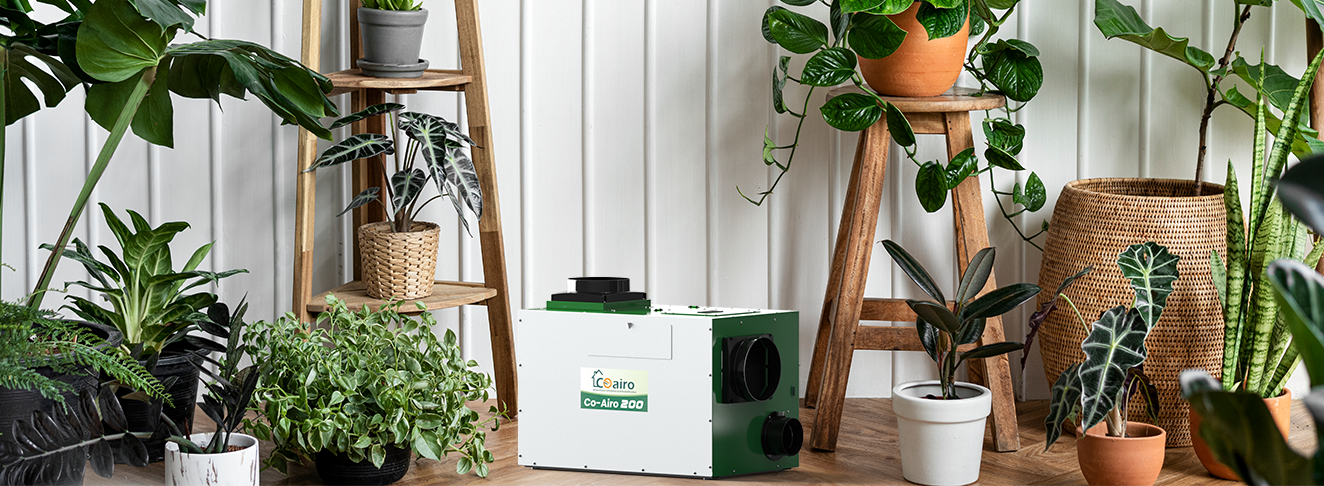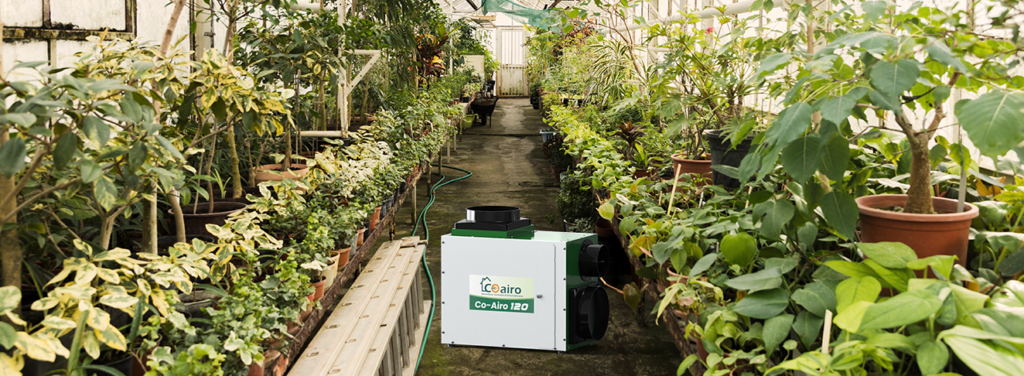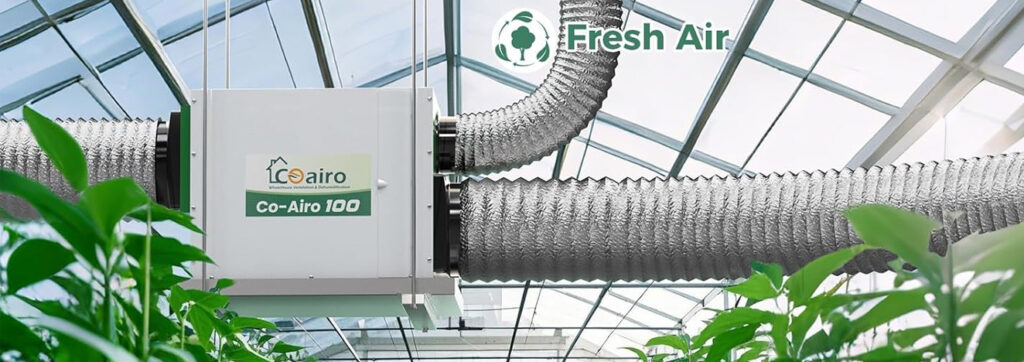Indoor plants do much more than just beautify your space. Typically indoor air is five times more polluted than outdoor air. However, nature has provided an effective solution in the form of houseplants.
These green friends work as natural air purifiers that purify indoor air by absorbing harmful compounds while helping maintain optimal humidity levels. Understanding how houseplants interact with your indoor environment is key to creating a healthy living space.
Let’s find out in detail how indoor plants affect air quality, how to balance plant care with indoor humidity levels, the ideal air conditions for plant growth, and whether they require additional ventilation or air purification.
Do Indoor Plants Affect Air Quality?
NASA’s Clean Act Study in the late 1980s found that certain houseplants can remove harmful volatile organic compounds (VOCs) from indoor air. When tested in controlled settings, these plants filtered out common indoor contaminants such as benzene, formaldehyde, and trichloroethylene within a day.
Plants act as natural air purification systems. They purify indoor air through a sophisticated process. Their leaves capture airborne pollutants and pass them to the roots where beneficial microorganisms in the potting soil break them down. This natural purifying mechanism involves absorption, dilution, and filtration. These mechanisms along with photosynthesis and respiration contribute to cleaner indoor air.
Also, the Spider Plants and Bamboo Palms are excellent choices for filtering indoor air. These low-maintenance houseplants efficiently maintain a healthy indoor environment. They require minimal care while consistently removing harmful compounds from your living space.
How Can You Balance Plant Care with Indoor Humidity Levels?
Most indoor plants require humidity levels between 30-60% to thrive. Too little humidity can lead to stunted growth and brown leaf tips. Whereas, excess moisture encourages unwanted plant diseases and mold growth.
Therefore, you need to balance care with indoor humidity levels to maintain a healthy indoor environment. Use a hygrometer to monitor your indoor humidity to keep humidty within the ideal range. Some plants such as cacti and succulents thrive in drier conditions while others like orchids and ferns require higher humidity.
If your home is struggling with excessive moisture, a whole-house dehumidifier will help you maintain the required humidity levels throughout your house. A whole-house humidity solution excels at handling excessive moisture with faster results and saves both the plants and your home from potential damage.
You can use a humidifier if you need to increase humidity for specific plants. Proper placement can also help. You can place such plants near kitchens and bathrooms. Remember you need to keep them away from furniture and wall to ensure sufficient airflow. Also, be careful when watering these plants as overwatering can increase indoor moisture levels.
Proper ventilation and air circulation help you control indoor humidity levels. Use ventilation fans to vent out stale indoors and ensure proper indoor airflow. Besides, keeping windows and doors open for some time can also help. Tools such as dehumidifiers, humidifiers, and ventilation fans help maintain perfect indoor conditions both for you and your plants.
What are the Ideal Air Conditions for Plant Growth?
Most houseplants excel in temperatures between 18-24°C. This range supports plant natural processes like respiration and photosynthesis while avoiding stress on the plants. So, you need to keep indoor temperature within this zone to help ensure proper foliage development and robust growth.
Remember effective ventilation creates optimal growing conditions for plants. Ventilation improves air circulation. This prevents stagnant pockets of humidity and helps distribute temperature throughout your home. Keep your plants away from heating vents and drafty windows as sudden temperature changes shock sensitive plants and hamper their growth.
You need to follow a balanced approach to manage indoor climate. So, use climate control tools such as HVAC systems and dehumidifying machines and monitor their impacts on your plants carefully. Keep in mind that air conditioning and heating systems can create overly dry conditions if left unchecked. So, address extreme conditions using proper tools such as dehumidifiers and humidifiers, and don’t let moisture climb too high or fall too low.
Moreover, light exposure has significant impacts on humidty and temperature around your plants. South-facing windows are usually warmer than north-facing windows. So, adjust plant placement based on seasons to maintain perfect growing conditions. Remember you need to take special of sensitive plants. So, move them away from cold windows in winter and provide shade during intense summer heat.
Yellow leaves, fallen flowers, and stunted growth are all signs of environmental stress in plants. These signs indicate that factors like temperature changes, poor airflow, or low humidity impede plant growth. So, you must monitor your plants closely and adjust their environment whenever you notice any warning signs. A stable environment where humidity, temperature, and airflow are balanced prevents such issues and promotes robust plant growth.
Do Indoor Plants Require Additional Ventilation or Air Purification?
You need to follow a comprehensive approach to create an optimal indoor setting. Tools such as whole-home dehumidifiers beautifully complement the natural purifying of plants. Plants with activated carbon filters can remove a large spectrum of indoor contaminants and maximize quality improvement. This is particularly helpful in spaces with insufficient indoor air circulation.
Good ventilation practices remain very helpful even with air filtering places in place. Fresh airflow avoids stagnant pockets of humidity and helps distribute fresh air throughout your home. Also, opening windows and doors periodically, running ceiling fans, or using ventilation systems significantly improve overall indoor air quality.
Besides, you should also reduce the indoor pollutants at their sources to maintain a healthy indoor environment. For instance, use low-VOC paints when renovating your homes, choose natural cleaning products, and limit the use of synthetic air fresheners. These simple choices help you create a healthier living space both for you and your plants.
Moreover, keeping proper space between plants helps prevent potential issues such as mold buildup. So, allow enough distance between plants. This promotes better air circulation and avoids moisture buildup. Typically, it si recommended to maintain 6-8 inches between plants depending on the size and growth habits of the plants. Don’t forget to monitor moisture levels regularly, especially in areas with multiple plants. Address any signs of excess humidity as soon as possible using the proper tools. This not only helps maintain the required growing conditions but also preserves your indoor air quality.
Conclusion
The relationship between houseplants and indoor air quality requires a careful balance of different climatic factors and ongoing maintenance. You need to strategically combine air-filtering plants with proper ventilation, humidity control, and mindful placement to create an indoor setting that promotes both plant health and fresh air throughout your space.
Keep in mind each house presents unique environmental challenges. However, the basic principles remain the same when addressing these challenges. So, you need to focus on creating stable conditions that complement the natural air filtering abilities of your plans while maintaining suitable temperature and humidty levels. Following such a thoughtful approach will reward you with thriving plants and improved indoor air quality.
Remember, investing in a whole-house dehumidifier and a proper ventilation system is worth it if you are dealing with extreme humidity challenges. Doing so will not only help you achieve optimal indoor conditions but also protect your plants and other valuable belonging.


